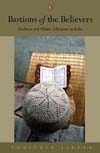Bastion
of Believers: Madrasas and Islamic Educations in India
Yoginder Sikand
Penguin India
Price: Rs395
Pages: 385
Published: 2005

MADRASAS UNDER AN ACADEMIC MICROSCOPE
|
Bastion
of Believers: Madrasas and Islamic Educations in India Penguin India Price: Rs395 Pages: 385 Published: 2005 |
|
Yoginder
Sikandís Bastion of
Believers: Madrasas and Islamic Education in India reveals facts about
madrasas that are not widely known. Sikand has done his work meticulously. His
passion for revealing history is evident from his arduous travels throughout the
country, visiting madrasas, scanning Urdu, Persian and Arabic works. Yoginder
Sikandís book reveals many facets of our social system, particularly those in
which oneís religious identity becomes a major factor in discourse. In the
introduction to the book he talks about the suspicious looks he got during his
research. The suspicion was about his interest as a non-Muslim delving deep into
Muslim domain. These things reflect the grave reality of how the work gets
relegated to backstage while an individualís caste and religious identity
become big factors.
The madrasa system in India is as diverse as Indian Muslims themselves. There are various Islamic sects and sub-sects which impart Islamic knowledge to students. Prior to Partition, many of the madrasas were getting help from the state. With the Partition a majority of Muslim leadership migrated to Pakistan. The community has been carrying the cross of Partition since then. The systematic marginalisation of Muslims, particularly in government offices and educational institutions, pushed them into ghettoisation. Madrasas became a place where even poor Muslims could get a space to live in and get religious education. Yoginder Sikand seems to question the propaganda that a majority of Muslims go to madrasas. Muslims also want better education for their children and send them to modern schools.
A
political campaign of the Sangh Parivar in the last decade of the 20th century
targeted madrasas as symbols of Muslim culture and dens of "terrorism".
Everyday newspapers would be full of reports regarding "terrorist"
activities in madrasas. Right wing columnists and pseudo patriots started
writing about the menace of madrasas, Muslims, mosques and mullahs. All that
suggested a rising tide of Islamic fanaticism and terror from which the country
had to be saved.
In
the past Hindus too got their education in madrasas. Even today, many of the
madrasas, especially in Avadh, are educating non-Muslim girls. In most states
the so-called Dars-e-Alia madrasas are under direct supervision of the
government.
Government
aided madrasas teach government approved syllabi, which includes computer
education and other contemporary subjects. Even some Dars-e-Nizami madrasas,
which shun government support and solely depend on contributions from the
community sometimes teach these subjects along with their core curriculum.
September
11 aggravated the problems of madrasas as it created suspicion fro Islam and
Islamic education. Growth of madrasas was linked to growth of Muslim
fundamentalism. Pakistan clamped down on madrasas under US pressure providing an
"example" for India to follow. Talk of modernization of the madrasas started
without much grounds work. Interestingly, alleged terrorists caught so far do
not come from the madrasas but from "modern" educational institutions.
Yoginder
Sikand points out in his conclusion that isolationist tendencies sometimes
fostered by religious institutions like madrasas could be counter-productive for
the community. Sikand emphasises interfaith dialogue between different religious
communities, not just Muslims and non-Muslims.
Sikand has delved deep into the evolution of the madrasa system in the country. He also suggested some ideas for reform and debunked many myths about the madrasas. g
V. B. RAWAT